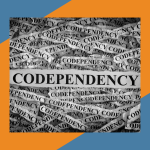As a parent, you may feel conflicted over how to handle the topic of social media with your teenager properly. We all know how harmful social media can be for teens; however, social media and technology are a huge part of daily life in today’s society, and there certainly are some benefits of social media. Previous generations did not have to navigate the social media landscape, making it a difficult challenge for parents today. Parents must be informed on this topic because social media is one of the biggest influencers on teens’ mental health today.
Merriam- Webster Dictionary defines social media as “forms of electronic communication (such as websites for social networking and microblogging) through which users create online communities to share information, ideas, personal messages, and other content (such as videos).”
Dangers of social media:
- Possible interactions with strangers
- Cyberbullying
- Posting private information they may not want out there in the future
- Exposure to age-inappropriate topics such as pornography and violence
- “Social media challenges” in which teens partake in risky activities as a challenge without understanding the potentially dangerous consequences
Mental health risks of social media:
- Anxiety
- Depression
- Self-harm
- Suicidality
- Isolation
- Social media addiction
- Sleep Disruption
- Low self-esteem
On social media, people only portray the version of themselves that they want others to see. Constantly viewing people’s seemingly perfect lives on social media feeds and comparing oneself to that unrealistic version of others can take a toll on anyone. Pre-teens and teens are especially vulnerable to the adverse effects social media can have because both their brains and identities are still forming. Teens’ prefrontal cortex, the area of the brain responsible for decision-making and planning, is not fully developed yet. It makes teens more susceptible to risk-taking behaviors on social media. Additionally, teens are still in the process of forming their identities and sense of self. Constantly seeing and comparing themselves to these unrealistic versions of others can impact their self-esteem and identity formation.
A 2021 Common Sense Media poll showed that the number of pre-teens (ages 8-12) using social media has increased from 31% to 38% since the pandemic started. Interestingly, they also found that although the use of social media heightened, the number of teens (age 13-18) who report enjoying social media use has decreased.
Charmaraman et al. (2022) found that the earlier the use of social media sites begins, the more negative effects there are. More specifically, studies show that Instagram and Snapchat users before age 11 have the most harmful effects. These pre-teens are more likely to meet people online, join sites their parents disapprove of, and have a greater likelihood of online victimization. They also found that limiting the use of social media through parental restrictions and reducing the frequency they were allowed to check social media lessened the negative effects.
Despite its risks, social media has some positive effects when used in adaptive ways. These include increased social support, communication, and learning. While there is not necessarily one way to go about social media use with your pre-teen or teen, parents can use guidelines to decide what will work best for everyone.
Parental mediation: Chen & Shi (2018)
Parental mediation is a term that refers to strategies used by parents to lessen the risks of social media for their children. Chen & Shi (2018) studied the effects of the three main types of parental social media mediation across studies:
- Restrictive mediation (rulemaking): It involves limiting your child’s time on social media and the content they engage with. It may include using parental filters on social media sites or your child’s phone or computer.
- Active mediation (instructive meditation): Involves positive communication and conversations about the content your child is seeing on social media and provides them with guidance on how to use social media. This type of communication with your children is helpful because it allows the teen to feel that they have autonomy and that their parents trust them, and because of this, the child is more likely to behave in safer ways.
- Co-using: Involves actively engaging in media with your children without engaging in discussions. It may include watching YouTube videos or watching Instagram or Snapchat with a parent. It helps parents understand how their children use social media and may model positive social media behavior for children.
Chen & Shi (2018) found that restrictive mediation is more effective than active mediation and co-using for reducing the time a teen spends on social media. However, active mediation and co-using are more effective than restrictive mediation for minimizing the risks of social media for teens, including engaging with unknown contacts, giving out personal information, and cyberbullying.
Parental Monitoring:
Many parents worry that monitoring their child’s social media accounts is too intrusive. Your responsibility as a parent is to do your best to ensure their safety. You do your best to ensure their physical and emotional safety, but in today’s world, you also need to look out for technological safety. Parental monitoring of social media helps mitigate adverse effects; however, you should do this in age and developmentally-appropriate ways.
A good guideline is that social media freedom should increase with age. A 16- or 17-year-old probably does not need their parents logging into their social media feeds every night or putting parental controls on their account. It is very reasonable for a parent to check a 13- or 14-year-old’s social media accounts. It also does not need to be done in a secretive way. Discuss that you will monitor the account with your child and let them know what you will be looking for concerning or inappropriate content. It allows for effective communication and discussion of important topics on social media.
As your child gets older and gains responsibility, allow your teen to discuss and compromise with you regarding their social media autonomy and freedom. With time, your involvement in your teen’s social media activity may become less monitoring and more conversational. Increasing your teen’s autonomy in this way helps to increase your teen’s confidence and sense of responsibility and establishes trust between you and your teen.
Other Guidelines: American Academy of Pediatrics (2020)
- Have discussions about social media dangers, including cyberbullying, sexual harassment, privacy violations, self-esteem, sexting, etc., and continue having open communication about these topics and your teen’s experiences online
- Ensure your teens’ social media use is not replacing other healthier activities (sports, hobbies, spending time with friends, etc.)
- Do not allow social media use during homework or family-time
- Do not allow media use an hour before bed or in the bedroom at bedtime
- Spend time choosing and engaging in media with your children
- Model the social media behavior you want to see in your children
- Support your teen in identifying what kind of content would be exciting and healthy for them to engage with on social media. For more help with this, read this blog post by Madeline Weinfeld, LCSW, about using social media to support mental health.
It is possible to set adequate social media limits for your teen, and it can be a great way to foster trust and communication with your child so that they can reap the benefits of social media without being harmed by the risks.



